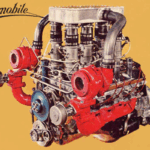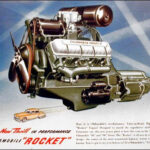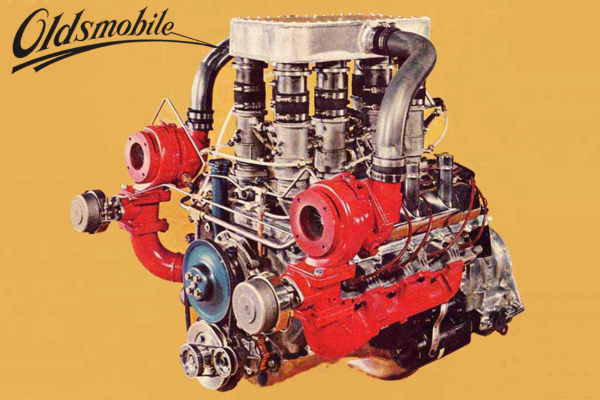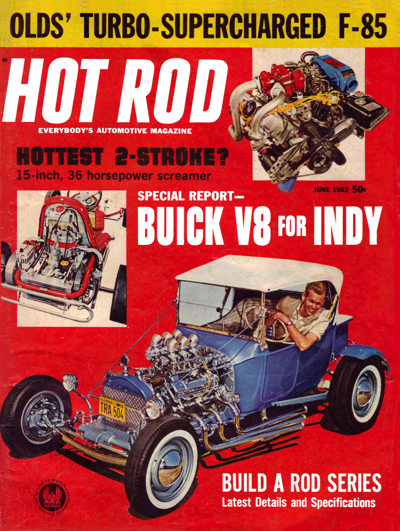by Society Staff –
reprint with permission only
427 CID
Ford’s 427 V8 was introduced in 1963 as a replacement for the 406 CID engine. Like the 406, it was only available in high performance applications. The true displacement of the 427 was actually 425 cubic inches, but Ford called it the “427” because 7 liters (427 cu in) was the maximum displacement allowed by most race sanctioning bodies at the time. The stroke was the same as the 390 at 3.78″, but the bore was increased to 4.23″.
The block was still cast iron but it had a special thick deck to withstand higher compression. The most significant change was to add cross-bolts to the block to secure the crankshaft from the side as well as the bottom. The cylinders were cast using “cloverleaf” molds–the corners were thicker all down the wall of each cylinder. 1963-64 427s used a nodular iron crankshaft, however it was changed to forged steel for 1965. All were balanced internally. All 1963-65 427s used solid valve lifters.

Two different models of 427 block were produced, the 427 top oiler and 427 side oiler. The top oiler version was produced in 1963-64, and this version delivered oil to the cam and valvetrain first and the crank second. The side oiler block, introduced in 1965, sent oil to the crank first and the cam and valvetrain second, which was similar to the oiling design from the earlier Y-block.
The 427 engine was available with low-riser, medium-riser, or high-riser heads, and either single or two four-barrel carburetion on an aluminum manifold with versions matched to each type of head design. In street usage, the 427 two 4-barrel version was rated at 425 HP @ 6000 rpm and delivered 476 ft. lbs. of torque @ 3400 rpm. The 427 single 4-barrel version as rated at 410 HP @ 5600 rpm and delivered 480 ft. lbs. of torque @ 3700 rpm. These figures were way, way underrated. In NASCAR trim the single 4-barrel version developed 500 HP or more.
In addition, Ford also produced tunnel-port heads and matching intakes for the FE engine. These lacked the limitations imposed by the other intakes’ need to squeeze the intake port between two pushrods by running the pushrods through the intake’s ports in brass tunnels.











